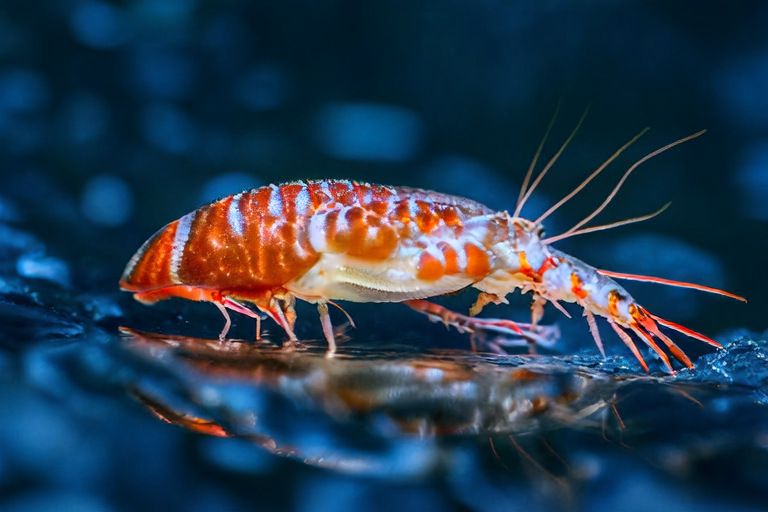Top 10 Fascinating Facts About Coral Shrimp: A Beginner’s Guide
Welcome to a journey into the vibrant world of coral shrimp, one of the most fascinating creatures in the ocean. These tiny crustaceans play a crucial role in marine ecosystems, yet they remain largely unknown to many. This guide will introduce you to ten captivating facts about coral shrimp, providing insights into their habitat, diet, behavior, and unique adaptations. Let’s dive in!
1. Diverse Species: The Richness of Coral Shrimp Families
Coral shrimp belong to the family Palaemonidae, which includes over 600 species worldwide. They can be found in various colors, sizes, and patterns, making them a visually stunning addition to any reef. Each species has adapted to specific niches within the coral ecosystem, contributing to the biodiversity of the reefs they inhabit.
2. Habitat: The Home of Coral Shrimp
Coral shrimp thrive in tropical and subtropical waters, primarily inhabiting coral reefs, rocky shores, and seagrass beds. These habitats provide shelter, food, and breeding grounds essential for their survival. Coral reefs, in particular, offer complex structures where coral shrimp can hide from predators and find abundant food sources.
3. Diet: Omnivorous Feasting
Coral shrimp are omnivores, meaning they eat both plant and animal matter. Their diet typically consists of algae, detritus, small planktonic organisms, and even small fish or invertebrates. They play a vital role in the reef ecosystem by helping to clean the coral surfaces and maintaining the balance of nutrients within the reef.
4. Behavior: Social Creatures
Despite their small size, coral shrimp exhibit complex social behaviors. They often live in groups, forming communities within the intricate coral formations. These communities help protect each other from predators and facilitate mating rituals. Additionally, coral shrimp are known for their symbiotic relationships with certain species of fish, where both parties benefit from the arrangement.
5. Camouflage: Masters of Disguise
One of the most remarkable adaptations of coral shrimp is their ability to blend into their surroundings. Their coloration and patterns mimic the coral they live among, making them nearly invisible to predators. This camouflage is achieved through specialized cells called chromatophores, which allow the shrimp to change color based on their environment.
6. Reproduction: A Dance of Life
The reproductive cycle of coral shrimp is as fascinating as it is essential for their survival. Mating typically occurs during the night, with males performing elaborate courtship dances to attract females. After mating, females carry the eggs until they hatch, usually after several weeks. The larvae then drift in the ocean currents before settling on a suitable reef.
7. Lifespan: A Short but Eventful Life
On average, coral shrimp have a lifespan of about one to two years. Despite their short lives, they undergo significant developmental stages, from larval forms floating in the open ocean to fully grown adults living within the reef. Understanding their life cycle helps researchers assess the health of coral reefs and the impact of environmental changes.
8. Sensory Adaptations: Navigating the Reef
Coral shrimp possess highly developed sensory organs that aid in navigation and communication. Their antennae are sensitive to chemical signals in the water, allowing them to detect potential threats or food sources. Additionally, they can sense vibrations in the water, helping them avoid predators and locate mates.
9. Ecological Role: Cleaners of the Reef
As mentioned earlier, coral shrimp play a crucial role in maintaining the health of coral reefs. By feeding on algae and detritus, they prevent the overgrowth of harmful organisms that could smother the coral. Their cleaning activities also contribute to the overall aesthetic beauty of the reef, making them indispensable to the ecosystem.
10. Threats: Challenges Facing Coral Shrimp
Unfortunately, coral shrimp face numerous threats due to human activities. Pollution, overfishing, and climate change all impact the health of coral reefs, directly affecting the shrimp populations. Rising sea temperatures and ocean acidification are particularly concerning, as they can lead to coral bleaching and habitat loss. Conservation efforts aimed at protecting coral reefs are essential for ensuring the survival of these remarkable creatures.
Conclusion: The Importance of Coral Shrimp for Marine Conservation
Coral shrimp are more than just colorful inhabitants of the reef; they are vital components of marine ecosystems. Understanding their biology, behavior, and ecological roles is crucial for effective conservation strategies. By appreciating the complexity and beauty of these creatures, we can work towards preserving the delicate balance of our oceans, ensuring a future where coral shrimp continue to thrive alongside other marine life.
